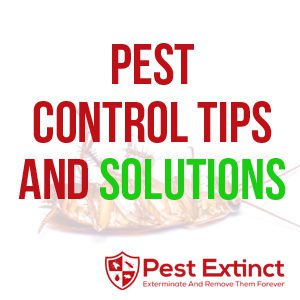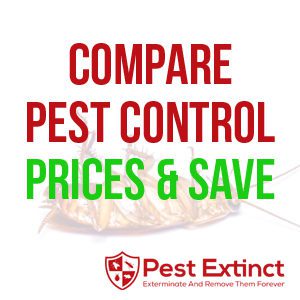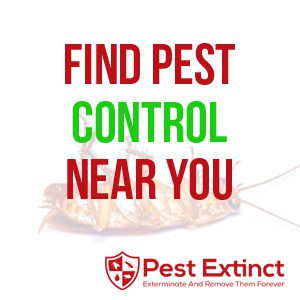
Debunking Pest Control Myths
When it comes to pest control, there’s no shortage of myths and misconceptions. These can range from misunderstandings about the behavior of pests to misconceptions about the effectiveness of various control methods. This blog aims to debunk some of the most common pest control myths, providing homeowners with accurate and reliable information to make informed decisions.
Myth 1: Clean Houses Do Not Get Pests
The Reality: While a clean and well-maintained home can reduce the likelihood of pest infestations, it does not make it immune. Pests are attracted to a variety of factors beyond just food scraps or messes, including moisture, shelter, and even the warmth of your home.
The notion that clean houses are immune to pest infestations is a common misconception in pest control. Understanding the origins of this myth, its partial truths, and why it’s not entirely accurate provides a clearer picture of effective pest prevention.
The Origin of the Myth
The idea that pests only infest dirty or unkempt homes likely stems from the visible correlation between poor sanitation and pest problems. Pests are often associated with unclean environments because they can easily find food and nesting materials in such places. This association has led to the oversimplified belief that cleanliness alone is enough to prevent pest infestations.
The Partial Truth Behind the Myth
There is some truth to the idea that cleanliness can deter certain pests. Regular cleaning can help reduce food sources and nesting materials for pests like ants, cockroaches, and rodents. Removing clutter can also eliminate potential hiding spots for pests. In this sense, maintaining cleanliness can be an important component of a broader pest control strategy.
Why the Myth Isn’t Entirely Accurate
However, the reality is that pests can invade any home, regardless of its cleanliness. Various factors can attract pests to a clean house:
- Moisture: Pests like termites, carpenter ants, and silverfish are attracted to moisture. Leaky pipes or damp areas in a home can draw these pests in, even if the home is otherwise clean.
- Entry Points: Cracks in walls, gaps around windows and doors, or uncapped chimneys can provide easy access for pests. Once inside, they can find hidden areas to live and breed.
- Outdoor Factors: Your home’s proximity to wild areas, gardens, or other outdoor spaces can increase the likelihood of pest invasions, irrespective of cleanliness.
- Food Storage and Disposal: Even in clean homes, improper food storage or disposal can attract pests. For instance, an unsealed container or a compost bin can be a food source for ants or rodents.
The Comprehensive Approach to Pest Control
While maintaining cleanliness is important, it should be part of a comprehensive pest control approach that includes:
- Regular Inspections: Periodic inspections can help identify potential pest problems early, even in clean homes.
- Sealing Entry Points: Regularly check and seal any potential entry points around the home.
- Moisture Control: Address any moisture issues promptly, including fixing leaks and ensuring good ventilation.
The belief that clean houses do not experience pest problems is a myth that overlooks the complexity of pest infestations. While cleanliness can help reduce the likelihood of some infestations, it is not a foolproof pest prevention strategy. Understanding the various factors that contribute to pest infestations is key to protecting your home effectively. A combination of cleanliness, regular maintenance, and professional pest control assessments can provide the most comprehensive protection against pests, regardless of how clean your home is.

Myth 2: Cheese is the Best Bait for Mice
The Reality: Contrary to popular belief, cheese is not the most effective bait for catching mice. Mice are more attracted to high-calorie foods like peanut butter or hazelnut spread, which provide more sustenance and have a stronger scent.
The image of a mouse nibbling on a piece of cheese is a classic one, popularized by cartoons and folklore. But when it comes to effective pest control, does this stereotype hold up? Let’s explore the origins of this myth, its factual basis, and why cheese may not actually be the best bait for mice.
Origins of the Cheese Myth
The association between mice and cheese may stem from historical times. In the past, when food storage options were limited, cheese was often stored in ways that made it accessible to rodents. Its strong smell would naturally attract mice, leading to the belief that cheese is their preferred food.
The Partial Truth
Mice have a strong sense of smell, which means they are attracted to foods with a potent odor, and cheese fits this bill. However, their diet in the wild is more about survival and less about preference. Mice tend to eat grains and seeds as their primary food source, but they will not shy away from any readily available food source, including cheese.
Why Cheese Isn’t Necessarily the Best Bait
Despite the common belief, cheese is not the most effective bait for trapping mice. Several reasons contribute to this:
- Dietary Preferences: Mice are more naturally drawn to foods with high carbohydrate content, like grains and fruits. In urban environments, they are also known to be attracted to sugary and fatty foods.
- Practical Issues with Cheese: Cheese can harden and lose its potent smell, making it less effective over time. It can also be tricky to secure cheese to traps in a way that forces mice to trigger them.
- Better Alternatives: Foods like peanut butter, chocolate, and certain sugary or fatty foods have proven to be more effective as they remain appealing for longer and can be easily secured to traps.
Understanding Mice Behavior for Effective Trapping
Effective mouse trapping goes beyond just choosing the right bait. It also involves understanding mouse behavior:
- Location of Traps: Mice tend to travel along walls and are wary of open spaces. Placing traps along their travel routes increases the chances of capture.
- Multiple Traps: Since mice are curious but cautious creatures, using multiple traps increases the likelihood of catching them.
- Regular Monitoring: Traps should be checked and re-baited regularly to ensure they remain effective.
The myth that cheese is the best bait for mice is more a product of cultural imagery than pest control efficacy. While mice may be attracted to cheese, there are more effective options available. Understanding mice’s natural behaviors and dietary preferences is key to choosing the right bait and successfully trapping these common household pests. As with any pest control measure, a combination of the right techniques and a thorough understanding of the pest you’re dealing with will yield the best results.



Myth 3: Bedbugs Only Live in Beds
The Reality: Bedbugs can live in multiple places beyond just beds. They can be found in furniture, carpeting, behind wallpapers, and even in electrical outlets. Their ability to hide in various places makes them particularly challenging to eradicate.
One of the most persistent myths about bedbugs is that they are confined solely to beds. This misconception can lead to ineffective pest control strategies, as homeowners may focus only on their beds while neglecting other potential bedbug habitats.
The Origin of the Myth
The name ‘bedbug’ naturally implies that these pests are found exclusively in beds. Indeed, beds are a common place for bedbugs to reside since they provide easy access to their human hosts during the night. However, their presence is not limited to just the bed.
Understanding Bedbug Habitats
Bedbugs are expert hitchhikers and can thrive in a variety of environments close to their food source – humans.
- Beyond the Bed: While bedbugs are commonly found in mattresses, bed frames, and bedding, they can also inhabit other areas of a bedroom and beyond. They can be found in furniture like sofas and armchairs, behind wallpaper, in electrical outlets, and even in small cracks in walls and floors.
- Mobility and Spread: Bedbugs can move between rooms in search of a new host or hide in luggage, clothing, and other personal items, making it easy for them to spread to different areas of a home or even to entirely new locations.
The Truth About Bedbugs in Clean Environments
Another aspect of this myth is the misconception that bedbugs are a sign of a dirty or unkempt home. In reality, bedbugs are not attracted to dirt or decay but to the presence of a host from whom they can feed. They can thrive equally in clean and cluttered environments as long as they have access to a human host.
Effective Bedbug Control
Understanding the true nature of bedbugs is essential for effective pest control:
- Comprehensive Inspection: A thorough inspection of the home is crucial, extending beyond the bedroom to identify all potential infestation areas.
- Professional Treatment: Due to their elusive nature and resistance to many common insecticides, professional treatment is often necessary to fully eradicate a bedbug infestation.
- Preventative Measures: Regularly inspecting luggage and second-hand furniture, reducing clutter, and using protective covers on mattresses can help prevent bedbug infestations.
The belief that bedbugs only live in beds is a myth that can hinder effective pest control. These pests can inhabit various areas in a home and are not a sign of poor hygiene or housekeeping. Understanding the full scope of their potential habitats and behaviors is crucial for homeowners dealing with or looking to prevent bedbug infestations. Professional assessment and treatment are often necessary to fully address a bedbug problem, given their stealthy nature and tendency to spread beyond the bed.



Myth 4: If You Can’t See Them, You Don’t Have Them
The Reality: Many pests are adept at hiding and can go unnoticed for long periods. For example, termites can cause significant damage to the structure of a house without immediate signs. Regular inspections are important to detect and address hidden pest issues.
A common misconception in pest control is the belief that if pests are not visibly present, they are not in the home. This myth can lead to a false sense of security and delayed pest control measures, potentially allowing unseen infestations to grow.
The Nature of Pests’ Behavior
Many pests are skilled at staying out of sight, and their presence is not always immediately obvious. Understanding their behavior is key to recognizing hidden infestations.
- Nocturnal Habits: Many pests, including rodents and cockroaches, are nocturnal. They are active at night and hide during the day, making them difficult to spot.
- Hiding Places: Pests like termites, carpenter ants, and bedbugs can live and thrive in areas that are not readily visible, such as inside walls, under floors, and in furniture.
Subtle Signs of Infestation
There are often subtle signs that can indicate the presence of pests, even if the pests themselves are not seen.
- Droppings and Tracks: Small droppings, grease marks, or tracks can be a telltale sign of rodents or cockroaches.
- Physical Damage: Signs of gnawing, holes in wood, or damaged fabrics can indicate a pest problem.
- Sounds: Noises such as scratching, gnawing, or rustling within walls or ceilings, especially at night, can signal the presence of rodents or other pests.
The Risks of Unnoticed Infestations
Ignoring the possibility of hidden pests can lead to serious problems:
- Property Damage: Termites and carpenter ants can cause significant structural damage long before they are detected.
- Health Risks: Pests like rodents and cockroaches can spread diseases, and their presence, even if unseen, poses health risks.
Regular Inspections and Preventative Measures
Regular inspections and preventative measures are crucial in managing pest risks.
- Professional Inspections: Periodic inspections by pest control professionals can help detect hidden infestations.
- Preventative Steps: Seal potential entry points, reduce moisture, and keep your home clean to reduce the risk of pest infestations.
The belief that the absence of visible pests means your home is pest-free is a dangerous myth. Many pests are adept at remaining hidden, and their unnoticed presence can lead to significant issues over time.



Myth 5: Over-the-Counter Sprays are as Effective as Professional Treatment
The Reality: While over-the-counter pest control products can be effective for minor infestations, they often fail to address the root cause of the problem. Professional pest control services can provide more comprehensive solutions that not only treat the infestation but also help prevent future issues.
A common myth in pest control is the belief that over-the-counter (OTC) sprays are as effective as professional treatments. While OTC products can be useful for handling minor pest issues, they may not be sufficient for more serious or widespread infestations.
Limitations of Over-the-Counter Sprays
OTC sprays and products have certain limitations that homeowners should be aware of:
- Targeted Solutions: These products are often designed for specific pests and may not be effective against different types or stages of infestation.
- Temporary Relief: While OTC sprays can provide immediate relief by killing pests on contact, they may not address the underlying issue or prevent future infestations.
- Pest Resistance: Repeated use of the same OTC products can lead to pest resistance, making them less effective over time.
The Comprehensive Approach of Professional Pest Control
Professional pest control services offer comprehensive solutions that go beyond the capabilities of most OTC products:
- Expertise and Experience: Professionals have the training and experience to accurately identify pest problems and determine the most effective treatment strategies.
- Advanced Methods and Products: Professional pest control often involves advanced methods and products that are more potent and effective than OTC options.
- Customized Treatment Plans: Professionals can create customized treatment plans that address the specific needs of your home, considering factors like the type of pest, the extent of the infestation, and the layout of your property.
Understanding Integrated Pest Management
Professional pest control services typically use an integrated pest management (IPM) approach, which includes:
- Inspection and Identification: A thorough inspection to identify the type of pest and the extent of the infestation.
- Treatment and Prevention: The use of various treatment methods combined with preventive measures to address the current issue and reduce the likelihood of future infestations.
- Monitoring and Follow-Up: Ongoing monitoring and follow-up treatments, if necessary, to ensure the effectiveness of the control measures.
Safety and Environmental Considerations
Professional pest control also prioritizes safety and environmental considerations:
- Targeted Application: Professionals use products in a targeted manner, reducing the risk of exposure to non-targeted species and minimizing environmental impact.
- Safety Protocols: Professionals are trained to handle and apply products safely, protecting the health of your family and pets.
While OTC sprays can be effective for minor or isolated pest problems, they are generally not as comprehensive or long-lasting as professional treatments. Professional pest control provides a more holistic approach, combining expert knowledge, advanced methods, and safety considerations to effectively manage pest infestations.



Myth 6: All Pest Control Treatments are Harmful to Pets and Children
The Reality: Modern pest control techniques and products have evolved to be safer around pets and children. Professional pest control companies now offer a range of eco-friendly and pet-friendly options that are effective against pests but safe for your family.
A prevalent concern among homeowners when it comes to pest control is the safety of treatments, especially around vulnerable family members like pets and children. The myth that all pest control treatments are inherently harmful can cause unnecessary worry and may even deter people from seeking professional help. Let’s explore this myth and provide clarity on the safety of modern pest control methods.
Understanding Modern Pest Control Safety
Advancements in pest control technology have significantly increased the safety of treatments used in homes:
- Targeted Treatments: Modern pest control methods are designed to target specific pests, reducing the risk to non-target species, including pets and children.
- Regulated Products: The pest control industry is heavily regulated, with products undergoing rigorous testing for safety and effectiveness before they are approved for use.
- Eco-Friendly Options: There is a growing trend towards eco-friendly and organic pest control solutions that are less toxic and safer for use around humans and pets.
Professional Application and Safety Measures
Professional pest controllers are trained to apply treatments safely, further mitigating risks:
- Expert Application: Professionals know how to apply products in a manner that minimizes exposure to non-targeted occupants of the home.
- Safety Protocols: Pest control professionals follow strict safety protocols, including advising homeowners on how to prepare their home for treatment and any necessary post-treatment precautions.
Pet and Child-Friendly Pest Control
When dealing with homes with pets and children, pest control professionals often take extra precautions:
- Choosing Safer Products: Professionals can select products that are known for being safer around pets and children, such as baits and traps, or natural and organic solutions.
- Clear Instructions and Guidance: Homeowners will receive clear instructions on how to keep pets and children safe during and after the pest control process, such as vacating the home during treatment and waiting for a specified period before returning.
Myth 7: DIY Solutions are Always Enough
The Reality: While DIY solutions can be effective for small, isolated problems, they often fall short in tackling larger or more persistent infestations. Professional pest control services have the expertise and resources to manage complex situations more effectively.



Myth 8: You Only Need Pest Control When You Notice a Problem
The Reality: Regular pest control is crucial for preventing infestations before they start. By the time you notice pests, there may already be a larger problem at hand. Preventive pest control is key to keeping your home pest-free.
Understanding the truth behind these common pest control myths is crucial for effective pest management. Remember, knowledge is your best defense against pests. If you’re facing pest issues or want to ensure your home remains pest-free, consider reaching out to professional services for reliable and effective solutions. Don’t let myths guide your pest control strategies – stay informed and proactive in protecting your home.
Navigating the world of pest control can often be overwhelming, especially when you’re concerned about the safety of your family and pets. At Pest Extinct, we understand these concerns and are dedicated to providing solutions that are not only effective but also prioritize the well-being of your entire household. Get connected with free and competitive pest control quotes today.

Leave a Reply